In the space of just a few months the yoga industry, and the whole world, has flipped upside down. We went from buzzing yoga studios and eagerly anticipated yoga retreat schedules to setting up makeshift ‘at-home’ yoga studios, complete with live-streaming and online classes.
The yoga industry has been hit hard by the disruption. Even before governments issued unprecedented restrictions to prevent the spread of the virus, yoga studios were announcing temporary – yet indefinite – closure.
Many planned yoga events and retreats have been cancelled or tentatively rescheduled for the remainder of the year. This mostly due to travel restrictions or a general fear of travel due to COVID-19. The uncertainty is just too high to commit to anything.
It’s been tough, leaving many of us to wonder whether the landscape for yoga teachers has changed for good.
There have been many struggles along the way
Between the irritating tech issues (anyone taught an entire class only to find that the live streaming dropped before the first down-dog?) to figuring out a payment system and an online schedule.
Not to mention trying to keep your own energy levels up whilst teaching alone in an empty room. We’re missing the human connection and there’s only so much a bunch of ‘likes’ can do.
Whilst streaming doesn’t quite match the in-person experience, it does provide significant benefits. And now, more than ever, our students need yoga for their mental and physical health.
What has been impressive is the sheer tenacity and willpower of the many yoga teachers, studios and teacher training schools. They have been quick to respond to the crisis, making sure their students weren’t left without their weekly (or even daily) yoga fix!
So, how did the yoga industry respond to COVID-19?
We went online!
Whilst lockdowns around the world took on many different shapes and sizes (from the more draconian measures implemented in China to the ‘lighter touch’ initiatives favoured by Scandinavian countries), one thing’s for sure: they all created unparalleled opportunities for the yoga industry.
Teachers learnt how to get their classes online, the yoga industry as a whole moved quickly and students were just as quick to follow. This is proven by the dramatic spike in people searching online for ‘online yoga classes’ that was seen at the start of March.
These strange and difficult times have caused no end of stress for yoga teachers. Many have seen their livelihoods threatened almost overnight. As “necessity is the mother of invention” yoga teachers have embraced digital solutions with gusto!
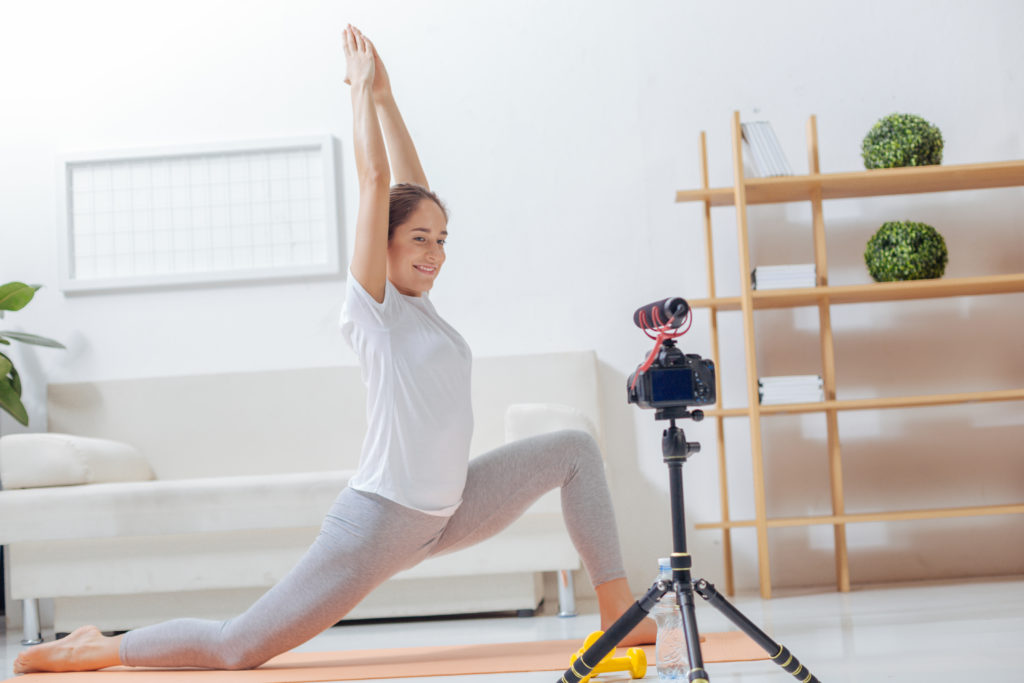
Yoga teachers across the globe have been showing up for their students on a variety of online platforms. From live streams on Instagram and Facebook to scheduled Zoom classes.
The digital space, and its various offerings, have provided a major support structure for the fitness industry as a whole.
Yoga studios started to set up online studios and worked with their yoga teachers to either record classes or set up live streams in their homes. This enabled teachers to keep to their regular schedules and show their students that they’re (virtually) there for them.
At-home yoga practices started to thrive
As more teachers started teaching online, more students started joining and practicing at home. Some had never even thought of joining a yoga class before!
Ché Dyer, a London-based yoga teacher was super grateful that she had already been sharing her yoga teaching online on her own platform, Move. Breathe. Create. She was able to quickly pivot to teaching more live classes online. Ché has been able to spend more energy nurturing her platform and members.
The trend in practicing yoga at home has actually been happening for some time. In 2016, a Yoga in America Study Conducted by Yoga Journal and Yoga Alliance found that American’s favourite place to practice was at home. 65% of yogis in America were regularly rolling out their mat in their own environment. It’s no surprise then that yoga students were quick to transition to getting their yoga fix online.
Yoga teacher training schools also moved online
They started getting accreditation to offer their programs virtually. The Yoga Alliance (USA) and Yoga Alliance Professionals in the UK agreed to temporarily accredit yoga teacher training certifications online during the pandemic. This decision, however, has been received with mixed reviews. Many yoga teachers feel that face-to-face training is essential and that online training will devalue the quality of newly-qualified teachers.
Despite this, Brett Larkin, founder of Uplifted Yoga, said that the demand for her Uplifted 200hr Online YTT has more than tripled during this time. Brett has always offered this training online and has added additional dates this year to meet increased demand. Brett adds that,
“it’s an incredible opportunity to use this time to deepen your education at your pace, your schedule, without any time away from family or travel costs.”
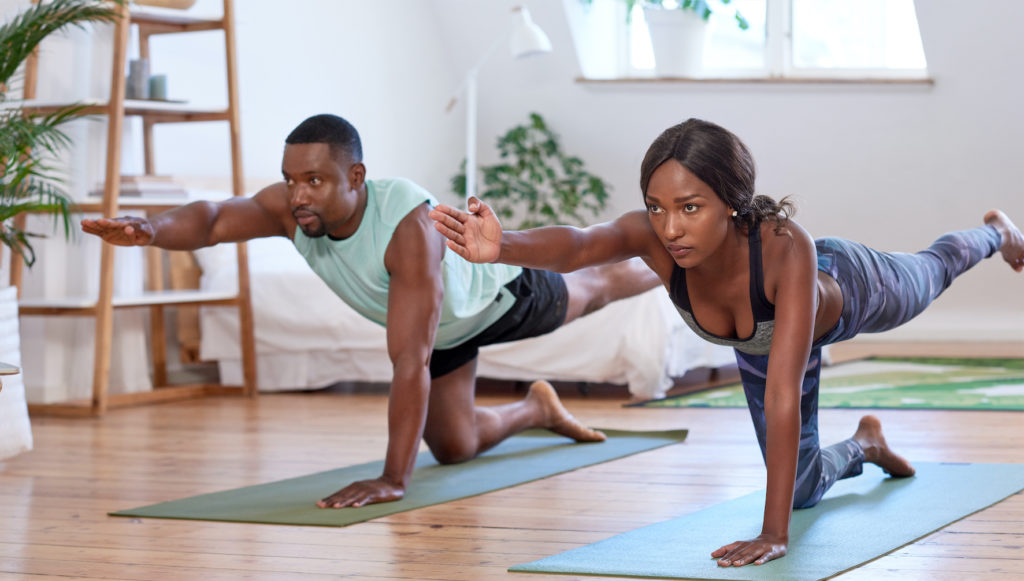
We’ve also seen insurance providers, such as beYogi in the US, responding to changes in the industry brought about by the pandemic. They now offer coverage for online streaming and pre-recorded classes.
Businesses within the yoga industry are now working hard to maintain their client relationships and precious cash flow. This requires yoga businesses to adopt a much more open and flexible approach to adapt to their own specific and local needs.
There is no perfect solution and opinions will always be mixed. All we know is that everyone is trying, and with that comes many struggles, but also, many opportunities.
The ups and downs of teaching yoga online
As with most changes in business, taking a yoga business online comes with its own set of challenges. Yoga teachers have had to become tech experts. They’ve had to learn the different online platforms, invest in recording and lighting equipment and figure out everything else that comes with starting an online business including online waivers and booking systems.
This, along with trying to keep their own anxiety regarding the COVID-19 crisis at bay and struggling to keep up with their own personal practice. Kirsti from Forever Body Coaching found her biggest battle was remembering to give to herself as much as to her students in the initial period of adjusting.
Teachers have had to find new ways to reconnect with their students, keep them engaged inside the virtual classroom and to create a welcoming online environment that students will want to be part of again and again.
UK yoga teacher David Balfe, from Inner Warrior Yoga, tackled this challenge by co-hosting a 28-day free yoga and fitness challenge with the studio that he works with. This helped maintain support and momentum during the initial period whilst they found their feet in this new online world.
South African yoga teacher, Paige Cassidy, set up a 21-day (and extended) yoga pose challenge on her Instagram account. She shared a different yoga pose each day to encourage her followers to share their experiences. Each day, her fellow yogis tagged Paige in their photos and videos on Instagram, creating engagement and community online.
In the end, yoga is all about community.
“It really makes you appreciate the connection you have with these people when you can only see them digitally.”
David adds that as he’s still in his first year of teaching and he’s using this time to grow his own community.
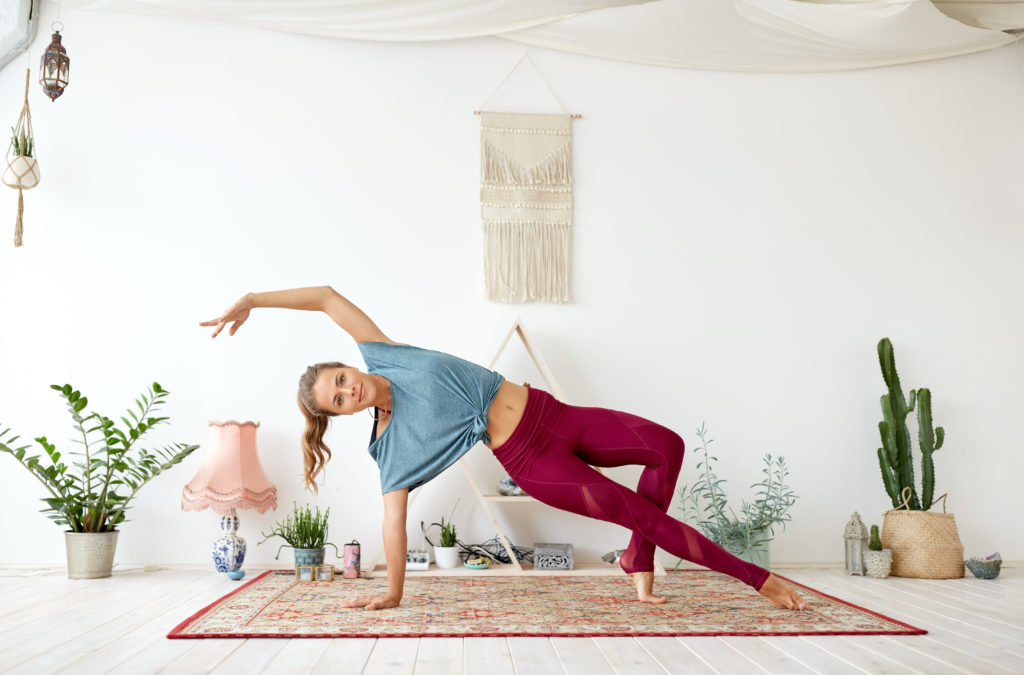
Why business education and tech knowledge are critical to support this transition
The pandemic escalated pretty fast in the beginning. This meant yoga teachers and studios had to quickly adapt to this new way of teaching and doing business. In order to do this, they had to gain extra knowledge (mostly on the tech side) as well as increase their business know-how.
It’s more than figuring out the sound system in the studio. Many yoga teachers have had to seriously up-skill themselves to keep up with the new demands that come with teaching online.
How Digital Yoga Academy responded to COVID-19
At Digital Yoga Academy, we responded to the pandemic by hosting affordable live virtual trainings to support teachers to take their classes online. The Online Yogi Virtual Live Program supported 150 teachers to learn the technical skills and marketing strategies required to set up and fill their online classes.
We also re-opened The Profitable Yoga Teacher Program, which teaches you how to create and launch an online yoga course. We welcomed an additional 40 teachers as fast-track students, joining the existing group who had begun the program last November.
“I took Kelly’s virtual Online Yogi program and within a week I had learned an immense amount and gathered the information for all the tools I needed to build a serious and successful online teaching business.”
– Helen Clough
This came as quite an adjustment to teachers who solely taught in studios and now found themselves having to grow an online community from zero. Our programs and global teacher community have been a massive support to each other during this transition. This isn’t something that teachers learn in yoga teacher training.

Yoga teachers need to learn business skills
It shows the importance of yoga business owners to invest in themselves and their business in order to survive and thrive beyond this pandemic.
Building a strong yoga brand and nurturing a loyal online student community is more important than ever. For many yoga teachers, taking their business online was something they’d always wanted to do. But the tech overwhelm and fears of being visible online held them back. The pandemic made teaching online a necessity and spurred many teachers to finally take action.
Allie Van Fossen (yoga teacher at The Journey Junkie) has been teaching online for several years already and said
“I’m excited that the pandemic has given teachers a loving nudge to get online, get over their tech fears, and realise there’s another way to thrive.”
Allie has been waiting for other yoga teachers to take the leap of faith and realise the potential of going online.
The financial impact of the transition to online
“I would love to see more teachers charge their worth, and businesses pay teachers their worth, based on experience and quality.” – Helen Clough, travelling yoga teacher and founder of Heart and Soul Flow.
In this new world comes uncharted ethical and business considerations. This includes what to charge and how to navigate contract negotiations with studios and partners. There are no easy or universal answers.
Many teachers battled with “selling” at the start of the pandemic, believing..
“I won’t be able to charge as much for my online classes”
“People won’t pay at all as there’s too much free yoga now”
“No one can pay now as they’ve lost their jobs”
“To sell or not to sell” really was the question on many people’s minds, but generally, we’ve seen a mix of responses to how yoga teachers and yoga studios are charging for their online offerings.
How teachers and studios are charging for online classes
Some yoga studios with monthly memberships have transitioned their members to an online schedule at the same price. Other studios have reduced the price of classes. Some have created new packages to encourage their students to continue practicing with them.
Many freelance yoga teachers have opted for the donation-based system by showing up on their mat for their students for free. In fact, many teachers in our community found they have actually generated a higher income through donation-based classes than their standard priced classes. We’ve also seen a few do a mix of free and paid classes. For example, free shorter length classes on Instagram Live and then full length paid classes on Zoom.

Whilst heart-centred yoga teachers may want to be of service to their community during these challenging times by offering free or low-cost offerings, teachers still need to make a living and pay their bills.
Many yoga teachers were laid off from their regular teaching gigs and found themselves with no online community. Finding new students and nurturing those relationships has been paramount to fill their online classes with paying students.
Others have started teaching less due to navigating the additional new roles that they are playing. These roles range from business managers to tech support, customer support and marketing, and being the teacher.
For yoga teachers to continue to thrive during this time, it’s important that they have a pricing structure and packages to not only entice students but retain them for the long-haul.
What will happen once the restrictions are lifted?
We’re already starting to see the restrictions easing up in the UK. Yoga teachers are able to meet with up to five students outdoors, while social distancing. This is great news and will help the yoga industry to survive COVID-19 but many yoga teachers and students are eagerly awaiting the reopening of yoga studios.
When this will happen? We’re not sure, but we know that when it does, things are going to be different.
Yoga Alliance has put together a guide for best practice recommendations for re-opening and recovery. This guide lists how to plan to operate safely, protecting yourself and your other teachers and students.
Studios will need to consider whether they have the capacity to operate in a manner that prioritises health and safety. Some of these precautions include reduced class sizes, marked out space configuration, strict cleaning regimens and pre-class health screenings. Students may need to bring their own equipment and hands-on adjustments will be off the cards.
New rules will need to be made and previous policies adjusted to account for the added safety precautions. Ultimately yoga studios and teachers must ensure they have procedures and waivers in place to release any liability in the case that COVID-19 is contracted whilst attending class. Cory Sterling from Conscious Counsel hosted a video training on this inside the Digital Yoga Academy Facebook group (watch here) to share specifics in relation to insurance, waivers and the legal essentials post-COVID-19.
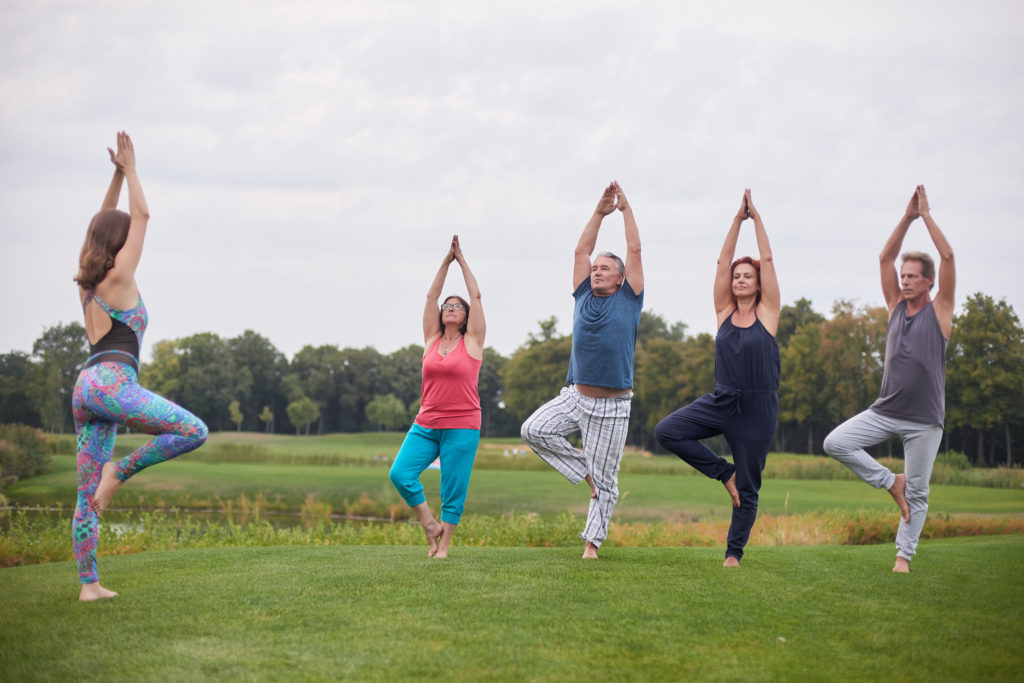
The phased opening approach
Yoga Alliance recommends a phased approach to re-opening. This allows you to grow into your old practices and add some new ones over time. This may involve taking more classes outdoors and definitely restricting the number of students.
Many studios and teachers in the UK are planning a 50/50 approach to teaching as lockdown restrictions ease. With teaching half of their classes in-person and keeping the remaining slots in their schedules for online practices.
We can start taking the lead from other countries who have already started to ease restrictions even further. New Zealand headed into Level 2 in mid-May, meaning that studios could start to reopen. The Drift Yoga Studio in Whangamata reopened their studio’s doors on 18 May.
So far, they’ve been limiting their class numbers with ensuring that all students book on their app before. They’re keeping three slots per week on their schedule for live-streamed classes due to the positive response from students.
Keeping the shift online and momentum going!
It’s clear to see that the shift to online teaching is here to stay.
It will never replace the face to face interaction and human energy experienced in-person. However, there’s a growing choice of platforms to deliver classes that provide a sustainable and scalable option for teachers.
The pandemic has certainly brought many challenges to the industry. But it’s also forced yoga teachers, studios and yoga schools to finally take action within the online space. As a result, yoga will continue to grow in popularity as it starts to become more accessible to people online.
There will of course, always be a need for yoga studios and in-person teaching. But having an online offering opens your business up to a whole new audience. COVID-19 has changed the world as we know it. We foresee many of the changes to stick around for some time, if not indefinitely.
So, keep on adapting. Keep on building your online yoga business and most importantly, keep on getting on your mat and encouraging your community to join you! The yoga industry will survive COVID-19.
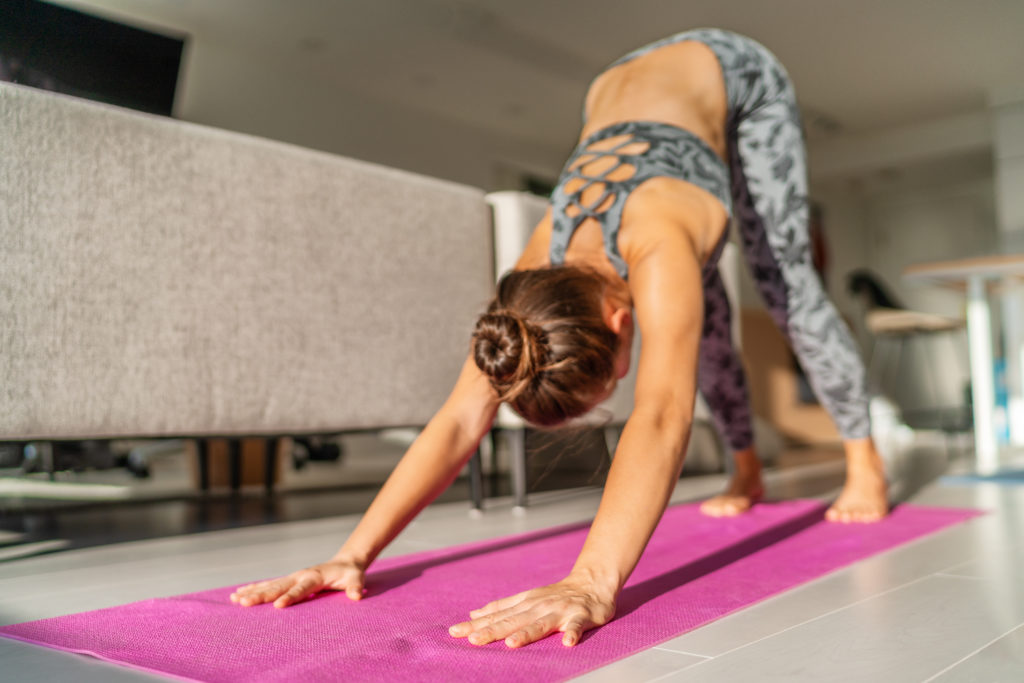
Over to You…
We would love to learn about your experiences during this pandemic. Let us know how it has affected you, your business and the challenges you’ve faced taking your classes and business online.
Please share in the comments below! Let’s continue to understand the impacts of a global pandemic and how the yoga industry is surviving COVID-19.
Yet to get your classes online?
Discover the easy steps to take your classes online in this video training.



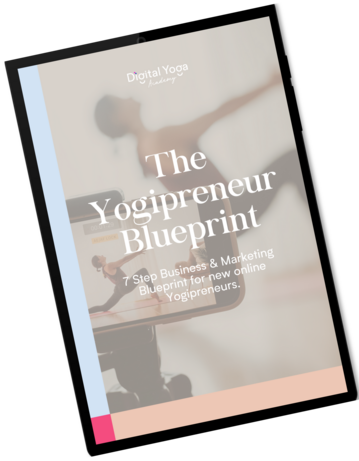





8 Responses
I really found new opportunitys to connect with my students, my mission got bigger and i got finally out of my comfortzone ! ( that means a lot)
I joined Kellys Retreat and gain a lot of support/ learnings and helpful knowledge. a new online world of community opened up to me. i m really happy and grateful to connect & learn so much!
Thank you Natali! And well done for embracing the other side of the comfort zone!
Pre-Covid i hadn’t taught online at all and the prospect terrified me! I did your 3 day free course which gave me the confidence to give it a go. Now Zoom is a BIG part of my life. I’m teaching 5/6 classes per week including one private. My classes are donation based right now (although not the private) which has worked quite well, although I have noticed that people are paying less as the lockdown goes on.
Learning the tech, the admin, social media, scheduling and coming up with new interesting weekly themes and playlists has been full on, but a welcome challenge while life has effectively been on hold.
I am (slowly) working my way through the fast track Profitable Yoga teacher course as I know that teaching predominantly online is the way forward for me.
I’m now building my website – which goes live on the 3rd July and I did my first Facebook Live yesterday – things I didn’t dream I’d be able to say 3 months ago!!
Of course I’m looking forward to teaching face to face again, but I love the fact that I now have the knowledge to complement that with online offerings and have created a (small for now!) community.
I have loved being able to connect with friends around the globe and when I do my own practice, its great that I don’t have to travel anywhere to take the class, so I can easily fit it into my now VERY busy week.
Thanks Kelly, you have been a brilliant mentor, cheerleader and given me the shove I needed to step up! ????????✨
well done Annabel for embracing online with such gusto!
Yoga is ever more important during this time of pandemic. All yoga educators must continue to believe that yoga is the most needed asset at this time. It is the only thing that will bring more calm and sanity to life.
We begin to see more violence among individual and countries during this time. What all yoga teachers need now is to continue to have a voice to provide teaching that direct oneself inwards. We need to bring more stillness among the chaos and more compassion to reduce violence.
We are all lucky in a sense that we are teaching yoga. There is no complicated equipment that is needed to give yoga to someone. This means online teaching is more possible and successful. All we need is to continue teaching with our mats, blocks or anything that you can find at home.
The world will never be the same again after the pandemic. Social distancing policy will limit the operation of any businesses that gathers crowd. This means, the only viable way to continue our teaching is online.
I strongly encourage all of us to embrace this new normal to move forward with our teaching and to continue to share our passion and love for the world.
It’s great to see how much you are embracing online 🙂 thank you for sharing Victor!
While I appreciate and personally havd been enjoying online offerings, my yiga therapy clients/students have been unable to make the switch . I cater to a very special population in need of connection. Much of my practice involves hands on modalities such as reiki, therapeutic touch , etc My students have mental health and physical considerations that simply cannot be served online . From PTSD, addictions, chronic injuries and pain , acceptance of gender, domestic violence and so on . These are people who came to us after being isolated , abused and disconnected already and this is not the proper platform. We got lumped In as non essential and have had overdoses, returns to unsafe homes and more . The majority of these students are beginners as well at yoga without a string practice. I’m praying they will return when we are clearest to open. I’ve done all o can do with this – ishvara pradidhana…
With loving kindness to all !!!
Thank you so much for sharing your experiences with us 🙂